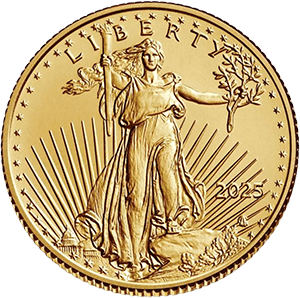In the decades-long study of asset behavior, few variables loom as large for the investor as inflation and interest-rates. For the preservation-seeking client of ASG — the stacker, the collector, the pre-parer, the beginner investor moving from crypto to metal — understanding how inflation and rate changes influence the precious-metals landscape is as critical as knowing which coin to buy. This article walks through the mechanics, the current context, and how a metals allocation fits into the broader picture.
The mechanics of inflation & interest rates
-
What is inflation? Simply put: the loss of purchasing power of currency. More dollars chasing the same goods or a devaluation of currency leads to higher prices.
-
Why interest rates matter. Monetary authorities (for example the Federal Reserve in the U.S.) raise rates to cool inflation, lower rates to stimulate borrowing/spending. Changes in rates affect real returns: if nominal interest is 5% but inflation is 4%, your real yield is ~1%.
-
The link to precious metals. When inflation is high, the currency loses value; tangible assets like gold and silver historically have acted as hedges. But that’s not the full story — interest rates and the strength of the U.S. dollar add nuance. For example: lower “real yields” (interest minus inflation) tend to benefit gold because gold doesn’t pay interest — when interest-bearing assets underperform after inflation, non-yielding assets become more attractive.
Current conditions & what they signal
-
Analysts highlight that precious-metals performance “hinges on the interplay between inflation and monetary policy.”
-
A recent article points out that many assume “gold automatically goes up when inflation rises,” but in fact “what really matters is … real yields, or interest rates after inflation is factored in.”
-
From ASG’s vantage: with inflation still elevated, rate expectations shifting, and geopolitical/monetary variables in flux, the stage is set for precious metals to play an enhanced role in a diversified portfolio.
Why this matters for your portfolio
-
Loss of purchasing power means that simply holding cash or traditional assets may not protect wealth over time.
-
If rates are cut or remain low while inflation persists, real yields decline — which often correlates with stronger precious-metals demand.
-
A strong dollar tends to dampen gold/silver prices (making imports cheaper, less appeal to foreign buyers) but a weak dollar (often following rate cuts or inflation worries) can boost metals.
-
Therefore: gold & silver aren’t just “nice to have” — they serve a strategic role in hedging currency/monetary risks.
Practical takeaway for ASG clients
-
Consider allocating a portion of your retirement or savings portfolio to physical precious metals as a wealth-preservation anchor, not just a speculative asset.
-
Monitor macro signals: if inflation remains sticky, and the Fed signals either few hikes or cuts, the metals environment could strengthen.
-
Work with your ASG advisor to review your current allocations, ask: “What portion of my portfolio is exposed to inflation/monetary-policy risk?”
-
Use the upcoming year-end review (as we are offering) to recalibrate ahead of 2026, before potential policy shifts.
-
Keep in mind: metals complement — they don’t replace — a broader investment strategy. The goal is resilience, not chasing speculative returns.
Conclusion
In an era where central-banks, currencies and commodities intersect in complex ways, the savvy investor doesn’t merely react to inflation or rate hikes — they understand the relationships and strategically position accordingly. With ASG’s guidance and the data above, your portfolio can address not only returns, but protection, real-value preservation and long-term peace of mind.


